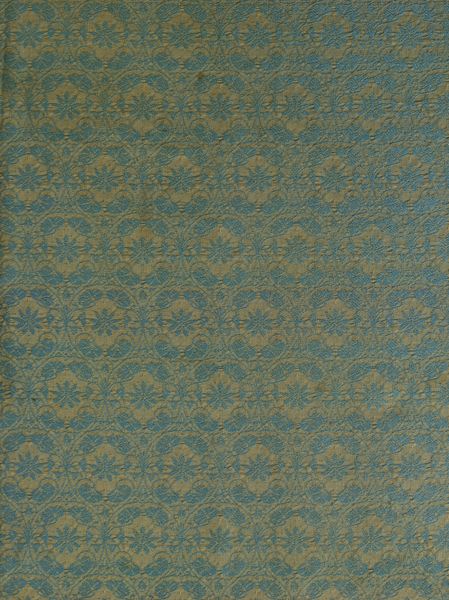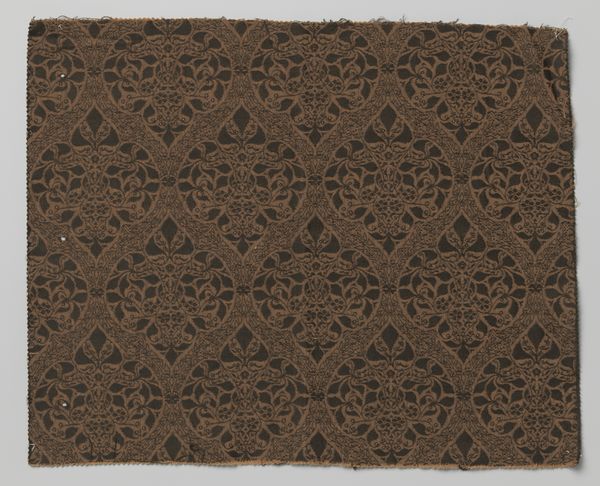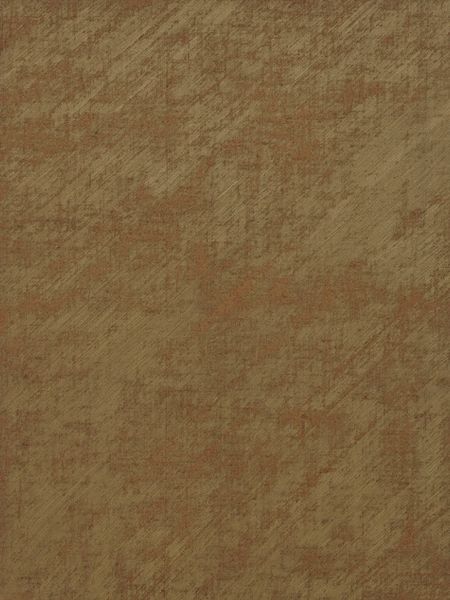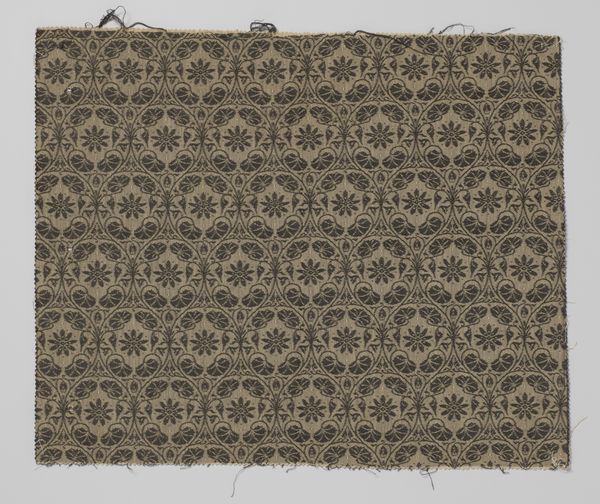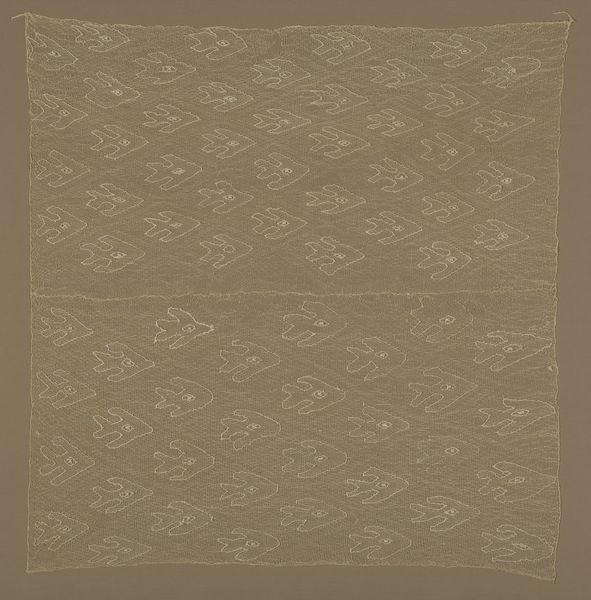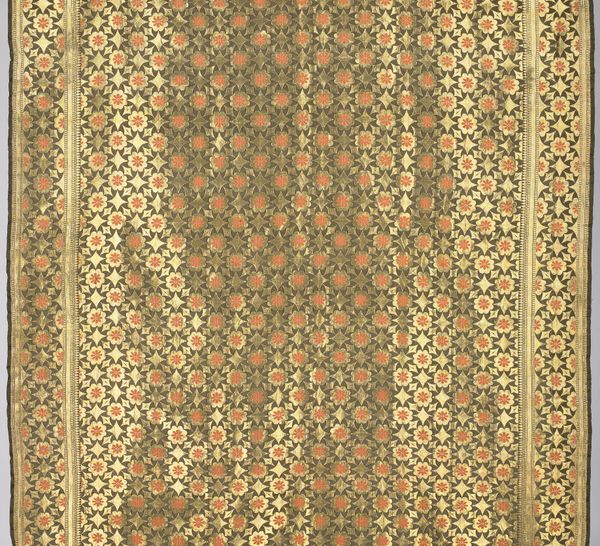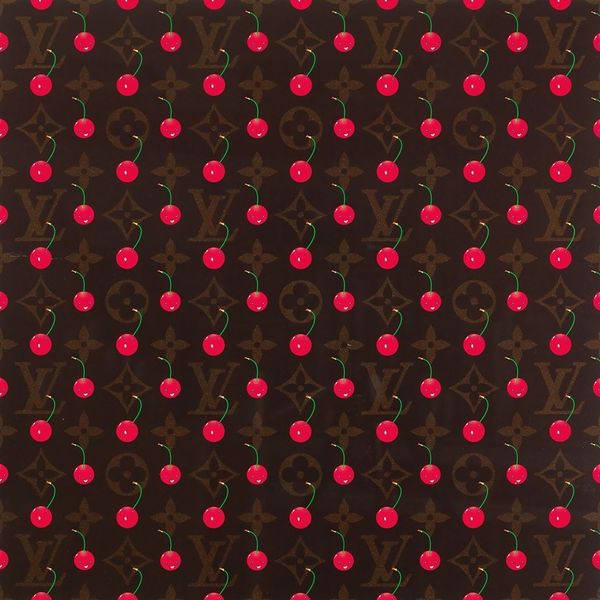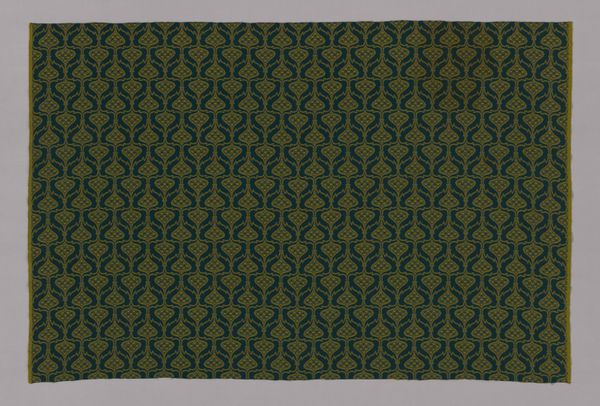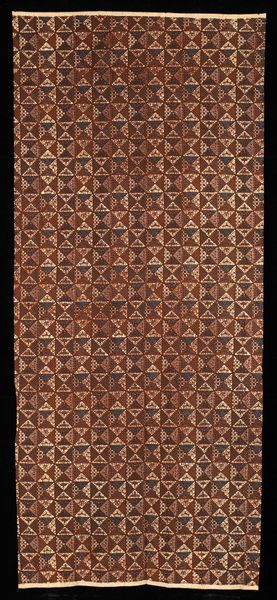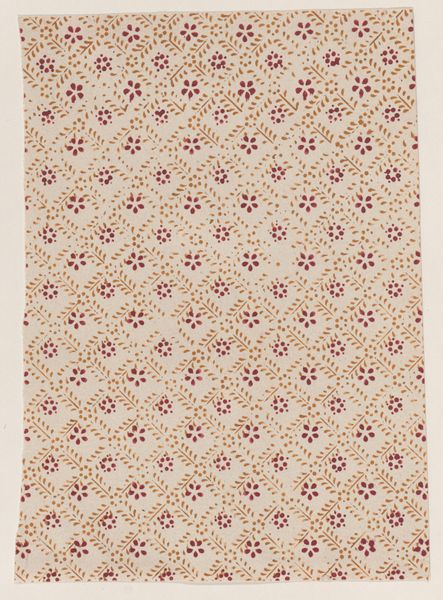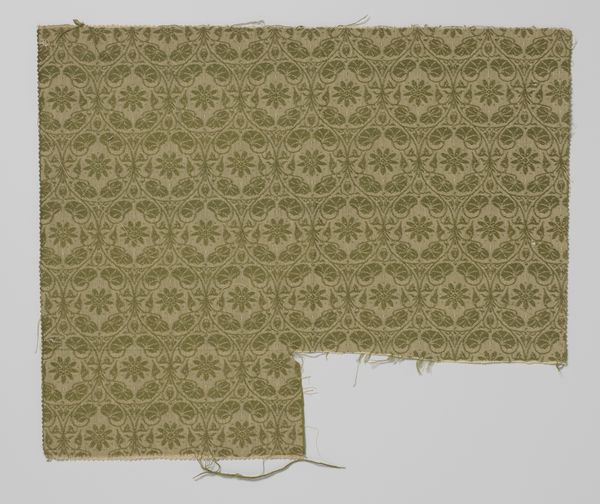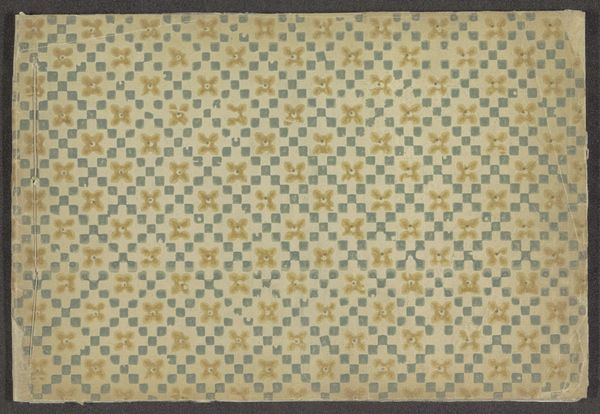
weaving, textile
#
natural stone pattern
#
asian-art
#
weaving
#
textile
#
geometric pattern
#
grainy texture
#
abstract pattern
#
organic pattern
#
geometric
#
repetition of pattern
#
intricate pattern
#
pattern repetition
#
layered pattern
#
organic texture
Dimensions: 129 1/4 x 48 in. (328.3 x 121.9 cm)
Copyright: Public Domain
Curator: Looking at this, I'm immediately struck by the feeling of dense, luxurious containment. It's intricate and yet somewhat oppressive in its darkness. Editor: I agree, there is a definite weightiness to it. We're looking at a sarong, a type of textile, possibly cotton, created sometime in the 19th century. It’s currently housed here at the Minneapolis Institute of Art. What symbols and historical echoes do you perceive in it? Curator: Well, the overall effect is like a field of linked lozenges or diamond shapes. This visual repetition and geometric grounding create a powerful sense of order, but I'm wondering about potential cosmological interpretations. Was this particular motif tied to fertility or protection? How was its visual story used, and how did it serve cultural identity in ritual or everyday use? Editor: Exactly! And what community created this? How was the process gendered? Textile production is so often connected to women's labor, and this labor isn't often recognized. How are power dynamics expressed through who creates, who wears, and who has access? Curator: A potent reminder that even something seemingly decorative, like a sarong, is a carrier of histories and hierarchies. The pattern, despite being abstract, evokes a deeply coded visual language—of protection and belonging perhaps. It reminds us that clothing can serve as a powerful icon. Editor: I am always interested in what this textile could tell us if it could speak. What were the conversations surrounding its creation, and how was this kind of labor viewed and valued at that moment? Understanding labor history through a piece of material culture invites us to critically look at gendered production in art history. Curator: Ultimately, viewing art through this lens makes visible otherwise unacknowledged threads of labor and ingenuity embedded in the object. Thanks, it is indeed humbling to acknowledge such complexities behind this visually imposing textile. Editor: A powerful reminder that art is inseparable from lived experience. Let’s keep pulling at those threads and interrogating what remains unseen.
Comments
No comments
Be the first to comment and join the conversation on the ultimate creative platform.
